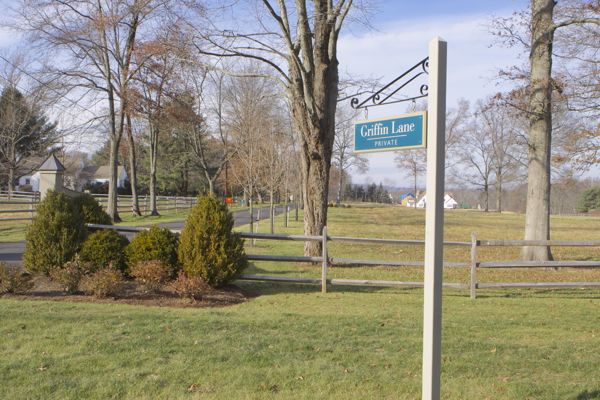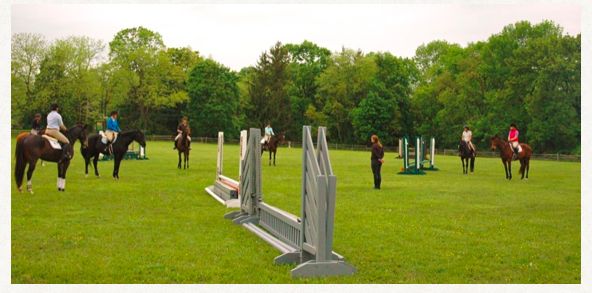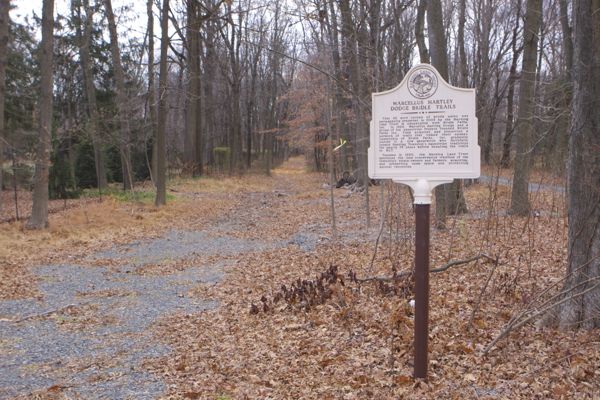NJ’s Landed Gentry – Open Space Has Become A Tool For The New Restrictive Covenants
“The diversity in the faculties of men from which the rights of property originate, is not less an insuperable obstacle to a uniformity of interests. The protection of these faculties is the first object of government” declared Madison. This is a correct analysis of the economic basis of political attitudes, except that too great a significance is attached to inequality of faculty as the basis of inequality of privilege.
… inequalities of privilege are due chiefly to disproportions of power, and that power which creates privilege need not be economic but it typically is. […]
The moral attitudes of dominant and privileged groups are characterized by universal self deception and hypocrisy. The unconscious and conscious identification of their special interests with general interests and universal values . .. is equally obvious in the attitude of classes. The reasons why privileged classes are more hypocritical than underprivileged ones is that special privilege can be defended in terms of the rational ideal of equal justice only, by proving that it contributes something to the good of the whole. …
The most common form of hypocrisy among the privileged classes is to assume that their privileges are the just payments with which society rewards specially useful or meritorious functions. ~~~ Reinhold Niebuhr “Moral Man and Immoral Society“
[*Updates below]
Today, in Part 1, keep Niebuhr’s critique of privilege in mind as I begin to flesh out the story suggested in my Saturday photo teaser:
The story that set me off on Saturday morning was this:
As I read the story, my head kept exploding, as it confirmed virtually every one of my criticisms of the Keep it Green Campaign for open space, as we will discuss in detail in future posts and outline below.
“*The total cost of the preserved acreage is $2,700,000, with additional funding expected from Green Acres and the Harding Open Space Trust (HOST) fund.”
(* “expected”? on what basis is that expectation formed? Could it be based on the fact that Gov. Christie’s Chief of Staff lives there?)
Those multiple criticisms included lack of strategic land use planning, purchase of regulated lands, inflated real estate appraisals, manipulation by well endowed private non-profit land trusts and Foundations, insider elite self dealing, an insidious form of privatization, magnification of inequality, inegalitarian transfer of public resources from poor urban to wealthy suburban communities, starving public parks of resources, cuts to DEP environmental programs, and deep environmental injustice, if not flat our racism.
But my anger turned to rage when I read this about Harding Township: (Wiki)
The 07976 ZIP code for New Vernon was named one of the “25 Richest Zip Codes” in the United States by Forbes magazine in 2006.[20]Many relatively unchanged large country estates that have been passed down through several generations attest to the wealth of many of its residents. Some have been listed on the National Register of Historic Places and some of those have nonprofit support organizations that assure the retention of the original nature of the properties.
And this ugly gem of history, from the National Parks Service:
The Silver Lake Historic District is identifiable as a distinct place through its geographic setting, its concentration of historic buildings, and through a shared historical experience, culminating in the 1928 restrictive covenants of Harding Township’s founders. It was through a variety of deed restrictions and gentlemen’s agreements that the area now identified as the Silver Lake Historic District became the core of a “preservation area” in the mid-20th century. The recognition of special qualities of place, which focused on a highly cultivated “rural” landscape and its attendant historic buildings, was apparent in the 1920s, and efforts were put in place to preserve them which lasted into the 1970s. At that time, the deed restrictions were replaced by local zoning laws, which perpetuated the scenic qualities valued in Harding Township for over fifty years.
Those restrictive deed covenants, gentleman’s agreements, and restrictive zoning help to explain the origin and perpetuation this data too:
The racial makeup of the township was 94.14% (3,613) White, 0.99% (38) Black or African American, 0.13% (5) Native American, 2.66% (102) Asian, 0.00% (0) Pacific Islander, 0.34% (13) from other races, and 1.75% (67) from two or more races. Hispanics or Latinos of any race were 3.49% (134) of the population.[8]
So, there it is.
I immediately grabbed the camera and the dog, jumped in the car, and headed out to Harding.
In our next few posts, we discuss what I saw there and why its relevant to the Open Space funding debate, particularly as that debate enters the next phase in the Democratic controlled legislature and urban Democrats are forced to vote on appropriations of Open Space funds. Now, that will get interesting real fast.
But for now, let me just say that the narrow meandering rural roads were no mere means of transportation.
They served as a means of visual display of the massive estates set back a half mile from the road, buffered by huge fields and lawns (preserved open space? publicly funded conservation easements?), with the migrant worker looking lawn care trucks in the circular driveways and the posted restricted Private Lanes so that the ogling rif-raff doesn’t get too close.
It all made me feel like I was in some kind of rich white people’s petting zoo – would some blue blood pop out on the lawn for an equestrian event (Dressage?) or a polo match?
[Update: According to DEP, Green Acres funded projects must provide “meaningful public access”:
Meaningful public access must be provided to every project funded under this program.
Let me offer just two examples of projects funded in Harding that do not provide “meaningful public access”.
This is Margetts Field, which I understand was partially Green Acres funded ($250,000).
The field provides scenic vistas and serves as a buffer from the road for the huge estates along the edge. It also seemed to have equestrian trails on the northern edge. So in addition to blocking development, it has significant benefits for the adjacent estate owners.
“Meaningful public access” is provided by a tiny unmarked , unsigned, and dangerous dirt pull off area that can handle, at most, maybe 4 cars, if the drivers cooperate. When I was there (cold day) there was 1 man, driving a BMW wagon, flying a robotic plane.
Here is another example – this is the entrance to the Marcellus Hartley Dodge Bridle Trail.
There was no “meaningful public access” provided at all (unless one arrives on horseback from the adjacent estates). I parked illegally in a private driveway to take this photo:
There seemed to be many other areas where conservation easements were purchased that provide no public access at all.





